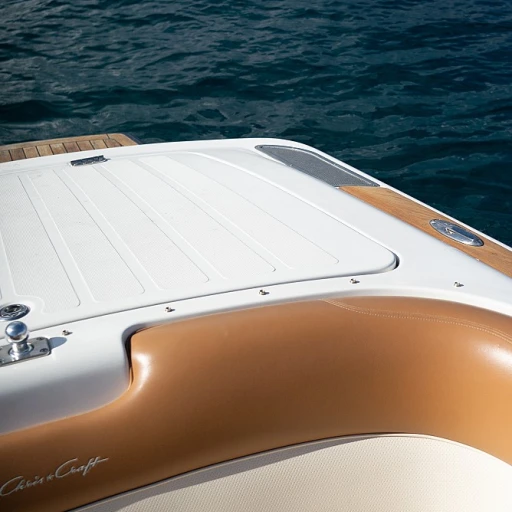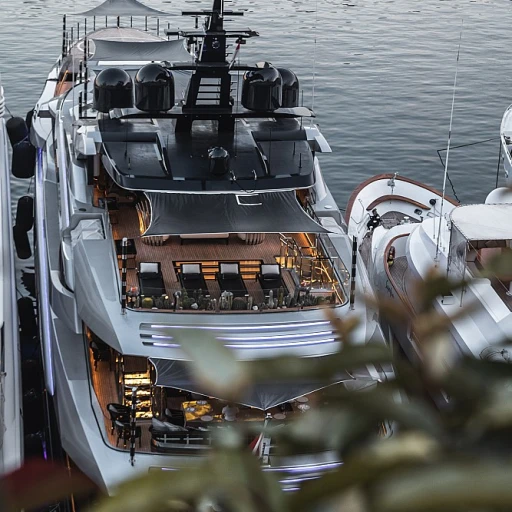
The Importance of Accurate Boat Wiring Diagrams
Why Precise Wiring Diagrams Matter
Accurate boat wiring diagrams are essential for yacht owners and marine electricians alike. They serve as the roadmap for the electrical system on your boat, guiding everything from the battery switch to the ground connections. When these diagrams are precise, they minimize confusion during installation and maintenance, ensuring your boat operates efficiently and safely.- Efficient Troubleshooting: When your boat's electrical components are not working as expected, a detailed wiring diagram becomes invaluable. Whether you're dealing with issues in the bilge pump or the house battery system, correct diagrams shorten the diagnostic process.
- Enhancing System Upgrades: If you're considering an upgrade like integrating a new battery charger or expanding the switch panel, having an accurate diagram aids in seamless integration with existing components.
Components of a Boat Wiring Diagram
Key Elements and Symbols in Understanding Diagrams
Boat wiring diagrams, integral components of any electrical system, comprise various elements that facilitate understanding and gauge the complexity involved in your yacht's electrical network. These diagrams will typically portray the electrical routes, showing how wires connect from the battery to the switch panel, ground, pump, and other systems like bilge pumps.The diagrams often include symbols and color codes for clarity. Familiarity with these will help you effectively interpret the wiring diagram for your boat.
- Wires and Connections: Color-coded wires represent connections between different components. Knowing which colors correspond to specific functions, such as ground or power, is crucial.
- Electrical Junctions: Junctions or crossover points indicate where wires meet or split, crucial for following the power flow.
- Switches and Panels: Depicting various switches, including a critical battery switch, their placement and function need to be clear to manage your power efficiently.
- Bus Bars: These are illustrated to show grounding and neutral connections; usually found near the switch panel or circuit breakers.
- Safety Features: Symbols for circuit breakers and fuses are vital. They indicate where the system can be protected from overloads.
As you explore more intricate aspects of boat electrical systems, it is essential to have a broad view of upgrading strategies and safety considerations, particularly how these elements play a role in maintaining the balance between power needs and operational safety. In a broader context, this knowledge serves as a foundation for understanding future design trends in the marine industry.
Common Challenges in Interpreting Wiring Diagrams
Tackling the Interpretation of Wiring Diagrams
Interpreting boat wiring diagrams, including those of yachts and other marine vessels, presents a series of challenges for even the most experienced technicians. The complexity of these diagrams arises from the numerous components and the intertwined nature of wires, which make it difficult to troubleshoot and upgrade the boat electrical system. One of the major hurdles in understanding these diagrams is the integration of various elements such as battery and battery switch configurations, pump operations, and switch panel usage, all of which need to be precisely mapped out. Due to the multilayered nature of a typical marine electrical system, confusion might arise when trying to trace a wire path through the diagram. Differentiating between power sources like the house battery or shore power, as well as understanding the ground and bus bar arrangements, require meticulous attention. Moreover, the lack of standardization across wiring diagrams can lead to misinterpretation. While some diagrams clearly mark wire connections, others may be less intuitive, potentially causing misunderstandings that result in errors when implementing changes or conducting repairs. The presence of circuit breakers, fuses, and the integration of a battery charger adds layers of complexity. It's vital for anyone working with these diagrams to familiarize themselves with the influence of these components on the overall function of the system. For instance, knowing how a bilge pump is wired, or how the ground bus operates, becomes integral to ensuring that the power distribution remains efficient and safe. As you navigate these challenges, it might be useful to explore resources or expert opinions from reliable sources. For yacht enthusiasts keen on deepening their understanding, referencing guidelines on choosing the ideal anchor could provide insights into balancing boat stability with electrical system demands, available here. This level of comprehensive planning is crucial to avoiding common pitfalls and achieving a flawless marine electrical setup.Upgrading Your Yacht's Electrical System
Revamping Your Yacht's Electrical System
Upgrading your yacht's electrical system can significantly enhance your boating experience, ensuring reliability and efficiency. Whether you're dealing with a vintage vessel or a modern marvel, understanding the nuances of your boat's wiring diagram is crucial. This knowledge will guide you in making informed decisions about the components and layout of your electrical system.
When considering an upgrade, start by assessing the current state of your system. Examine the wiring diagrams to identify outdated or inefficient components. Pay attention to the battery setup, including the house battery and battery switch. These are critical for maintaining power distribution throughout your yacht.
Next, evaluate the switch panel and circuit breakers. Modern systems often incorporate advanced switch panels that offer better control and monitoring of your yacht's electrical components. Upgrading to a more efficient bus bar and ground bus can also improve the reliability of your electrical connections.
Consider integrating a robust shore power system if your yacht frequently docks at marinas. This addition can provide a stable power source, reducing the strain on your onboard batteries. Additionally, a high-quality battery charger is essential for maintaining battery health and longevity.
For those who enjoy extended trips, upgrading the bilge pump and other essential systems is crucial. Ensure that your wiring can handle the increased load and that all connections are secure. A well-maintained electrical system not only enhances safety but also boosts the overall performance of your yacht.
Finally, stay informed about the latest trends in marine electrical systems. Innovations in marine technology continue to evolve, offering new solutions for power management and efficiency. By keeping your system up-to-date, you'll ensure that your yacht remains a reliable and enjoyable member of your fleet.
Safety Considerations in Marine Electrical Systems
Prioritizing Safety in Marine Electrical Setups
Ensuring the safety of your yacht's electrical system is paramount for a smooth sailing experience. As any seasoned skipper will attest, understanding the potential risks and implementing proper safety measures is a key aspect of maintaining marine electrical systems. Here are some essential considerations:- Grounding Systems: Properly grounding your boat's electrical system is crucial to prevent electrical shocks and ensure the safe operation of all components. A well-designed ground bus efficiently distributes electrical power and helps prevent stray currents that can cause corrosion or other safety issues.
- Fuses and Circuit Breakers: Integrating appropriate fuses and circuit breakers within the boat wiring diagram helps protect against electrical overloads and short circuits. These safety devices automatically disconnect the flow of electrical power in case of an anomaly, thereby protecting your boat's wiring and components.
- Battery Safety: The installation and maintenance of your yacht's battery system, including the house battery, battery switch, and battery charger, are critical for preventing mishaps. Regularly inspect these components for signs of wear and ensure all connections are secure.
- Shore Power Connections: When connecting to shore power, it is vital to check for correct polarity and ensure all wiring connections are secure. Faulty connections can lead to dangerous situations, making it essential to inspect your shore power system regularly.
- Bilge Pump and Switch Panel: Ensuring that the bilge pump and switch panel are wired correctly is necessary to avoid any electrical failures during critical moments. Maintaining a comprehensive boat wiring diagram for these components can make troubleshooting and repairs more efficient.













